Seahorse Offers a Tour of Coastal Drinking Traditions
The new Charleston bar, headed up by Christian Favier, is the sister spot to the lauded restaurant Chubby Fish.
Welcome to the weekend!
If you’ve read our Charleston coverage so far, you know that we loved our visits to the brand-new bar Seahorse. We stopped in on a couple different nights, and on each visit we found new favorite drinks. In today’s Cover Story, we catch up with beverage director Christian Favier to chat about the bar and some favorite drinks (you’re going to want the smoked olive martini!).
Then, be sure to snag a copy of our Charleston Field Guide, which features a freshly updated six-day itinerary with all our picks for coffee, breakfast, lunch, dinner, and drinks. It’s free for paid subscribers, or can be purchased for $20 on our website. It’s an essential guide to all the places and dishes we feel are worth your time and money when you visit town — like early morning banana bread at Babas, housemade smoked sausage at Lewis Barbecue, and whatever is on the chalkboard at Vern’s.
Also in today’s newsletter, The Order takes us to Easthampton, Massachusetts for an outstanding fried chicken dish loved by locals. And before we log off for the weekend, we catch you up on a few stories from our Weekend Reading list, including some chef-favorite diners, a California wine road trip, and Michigan restaurants with great views.
Thanks for reading!
Amy Cavanaugh & Kenney Marlatt

Seaside Sipping
CHARLESTON, S.C. — Walking into Seahorse is like entering an old sea captain’s house. The turquoise building is a classic Charleston single house, so you walk along the side porch to reach the host stand. Once inside, the two rooms are lushly decorated, with a teal and deep orange color scheme, a wallpapered ceiling, and artwork of ships and sailors. It’s an evocative space that sets the tone for the cocktail bar, which opened in February and focuses on coastal drinking.
“Everything started from the design and went out from there,” says beverage director Christian Favier. “We partnered with a really wonderful designer, Elizabeth Ingram, and her perspective is a lot of fun. She has a background in Broadway set design, and so a lot of her experience is designing around a story. When she approaches an interior, she first writes the story of the space, whether that’s truthful or fiction, then she makes her design decisions around that.”
Ingram’s story of Seahorse is about a New England sailor and his wife who move to Charleston before the sailor goes to sea and never returns. “His wife opens a tavern while awaiting her husband’s return, which never comes,” Favier says. “It’s a very romantic and fairly common old seafaring story.”
Favier took that story, which is printed over three pages on the menu, and imagined how the fictional sailor was “still out there traversing the globe,” while his wife was making drinks that incorporated the flavors he was having. “I knew that I wanted to look at coastal culinary flavors from around the world and put them in very familiar packages of classic cocktail formats,” he says.

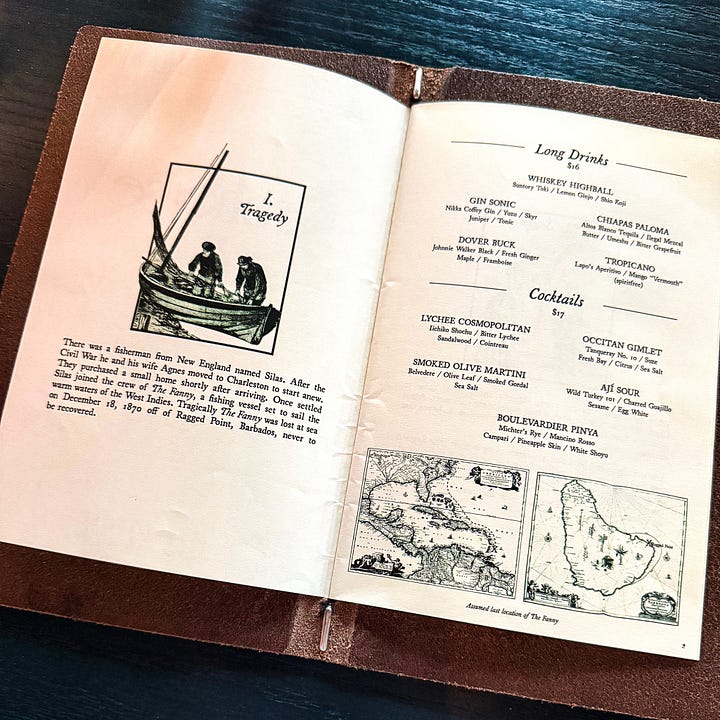

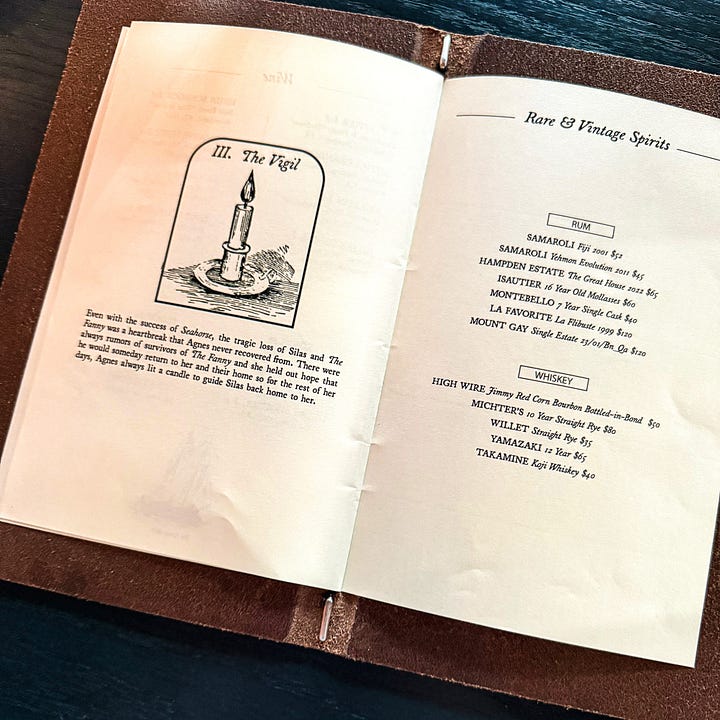
Favier left The Ordinary to join Seahorse, the sister spot to James London and Yoanna Tang’s wildly popular seafood restaurant Chubby Fish, as the opening beverage director. “James and Yoanna have a deep love for cocktail bars, and knew years before construction even started that they wanted their second project to be a cocktail bar,” Favier says. “They formulated the idea of Seahorse over time and have been collecting things over the years. Every time they’d see a painting in a shop or a bust of a sea captain or a copy of Moby-Dick, they would purchase it.”
While Seahorse is not simply the Chubby Fish bar, Favier takes a page from the work the team is doing there, and brings a culinary approach to his drinks. “We get to work side-by-side with really talented chefs and use techniques that aren’t utilized by many bartenders because they haven’t spent much time in the kitchen,” he says. One example is the smoked olive martini, which Favier says is inspired by Chubby Fish’s smoked fish curry.
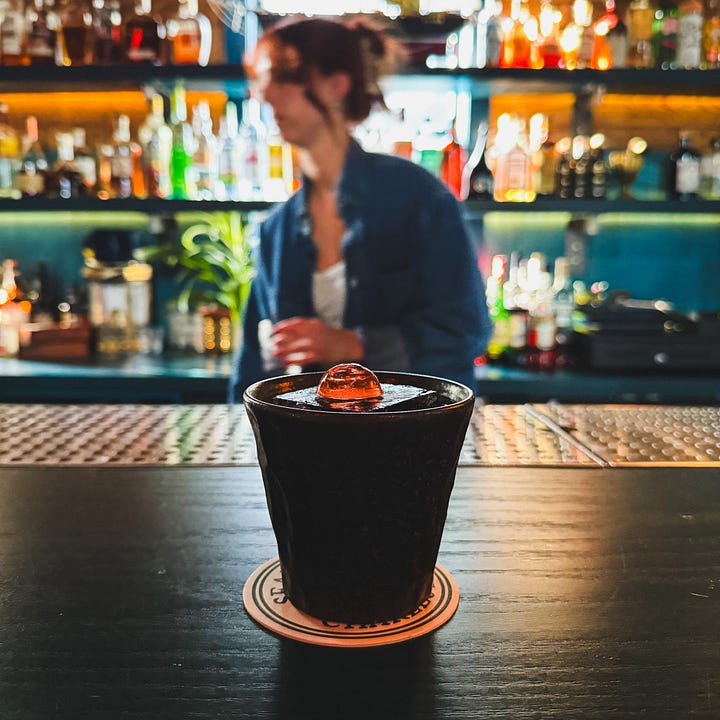

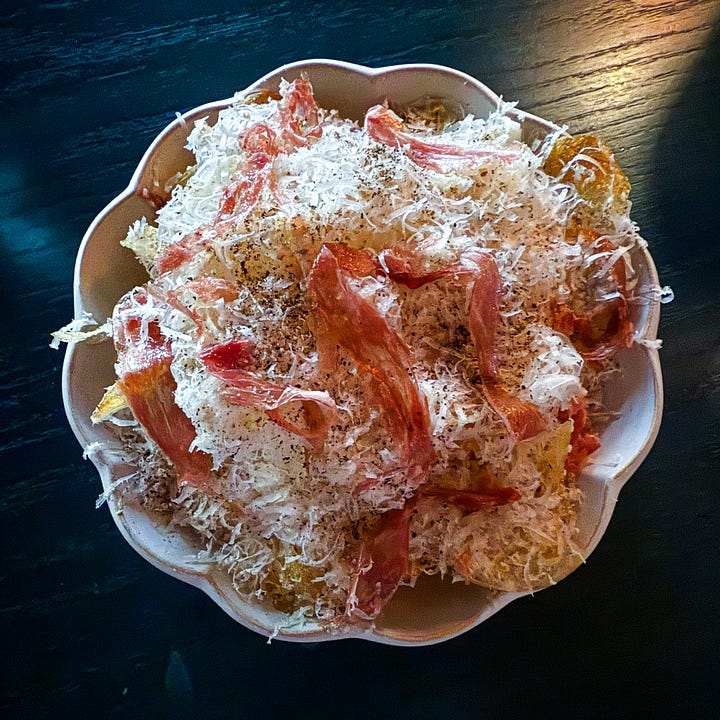
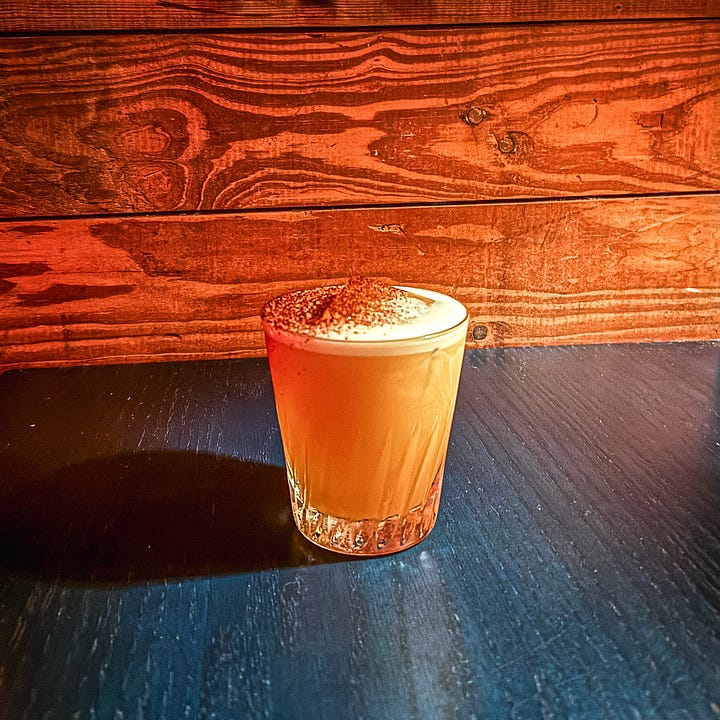
“That’s one of my favorite dishes in Charleston,” he says of the hickory-smoked local fish with green curry. “It’s so unctuous and delicious.” He tapped hickory smoke to transform a dirty martini. “I’m a pretty big detractor of the dirty martini and its overwhelming popularity the last few years,” Favier says. “It’s a drink that I knew I’d be making a lot of, and I was like, ‘What’s a version that I feel really good about and will be happy serving 100 of every night?’” He smokes gordal olives — “they’re super meaty and punchy” — for 45 minutes over hickory wood, then makes a brine with the blended olives, sherry vinegar, and sea salt. He mixes the brine with Belvedere vodka (“a rye-based vodka with a lot of heft to it”) and Four Pillars Olive Leaf gin, and serves it with a dish of three olives on the side.
Seahorse’s cocktail menu is tight, with five “long drinks” (highballs) and six stirred or shaken drinks. The boulevardier pinya, made with Michter’s rye, Mancino Rosso Vermouth di Torino, Campari, pineapple skins, and white shoyu, was a particular standout, as were some of the highballs. These range from a fresh take on the Paloma, with tequila, mezcal, umeshu, and bitter grapefruit, to the tabbouleh collins, a savory Mediterranean-influenced drink with Cognac and fino sherry enhanced with parsley, cucumber, cherry tomato, and olive oil.
Seahorse has South Carolina’s first highball machine, and this allows Favier to offer more of this style of drink. “I wanted to fold that piece of equipment into a larger part of the menu,” he says. “And summer in Charleston gets pretty sweltering, so it’s going to be really nice to have a section of the menu that’s dedicated to things that are a little lower ABV and very cold and refreshing.”
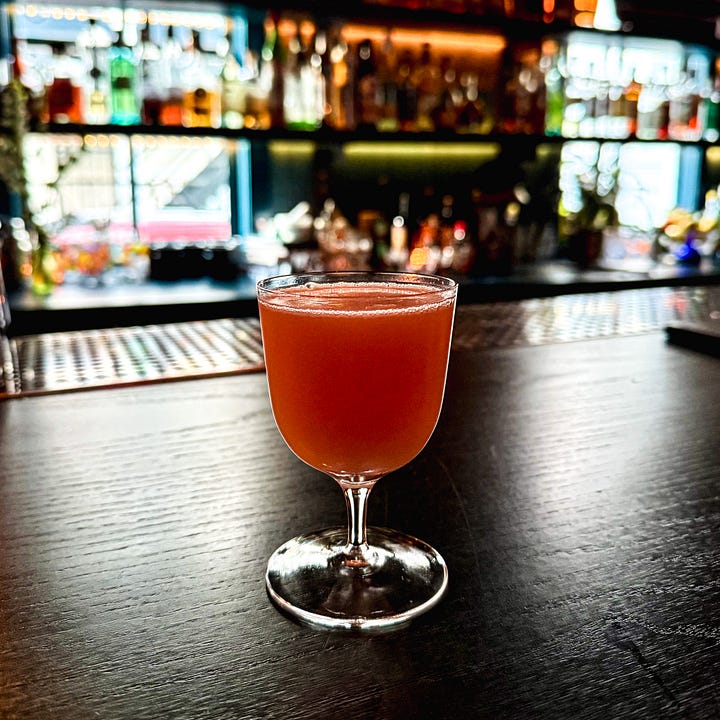
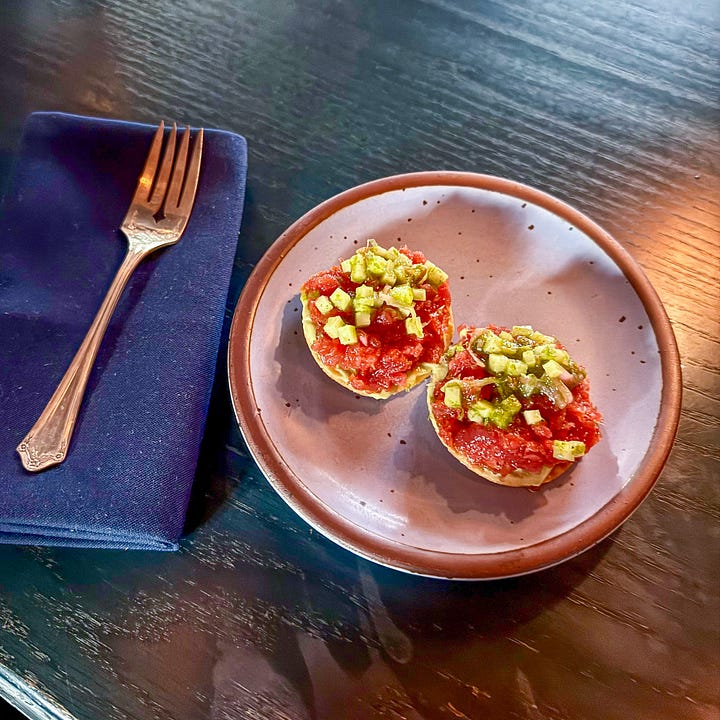

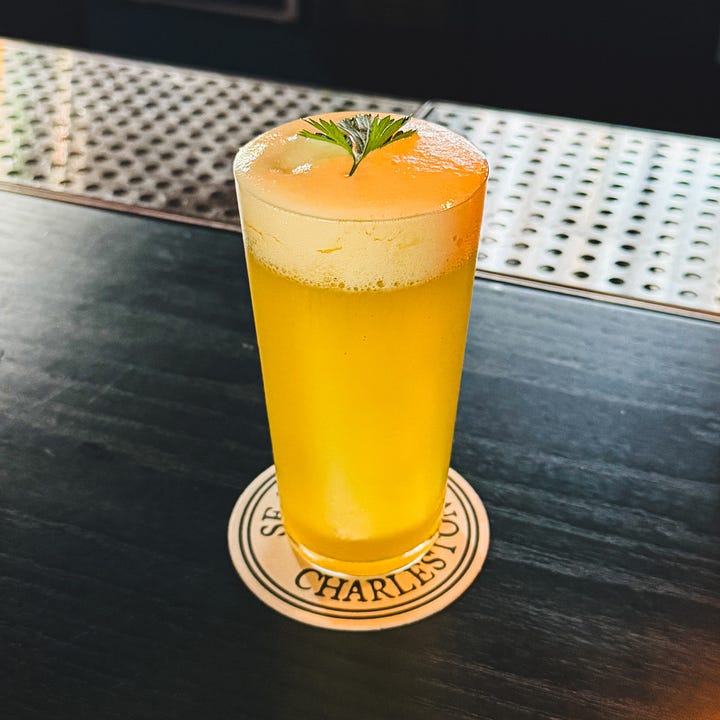
The highballs also speak to his drink philosophy, which foregrounds simplicity. “One of my biggest inspirations in the world of cocktails is Katana Kitten — when I was living in New York, I was there every week for a year,” Favier says. “That bar taught me an important lesson, that great stuff doesn’t have to be so serious. That you can make things that are delicious and high quality and fun.” That’s one reason he gravitates toward highballs — “the Japanese whisky highball is the perfect example of perfection in simplicity,” he says. “Something I’ll always speak to is to try to pare back ingredients as much as you can. The best version is the one with a few less ingredients.”
For the wine list, he wanted to offer Old World wines from “generational producers who are creating more accessible entry level wines.” For instance, he’s offering a gamay by Julien Sunier. “He’s doing really fantastic work on old vine gamay,” Favier says. “He and his brother Antoine are two of the biggest new names in Beaujolais. Recently Julien decided to release this Beaujolais that is intentionally created to be accessible and inexpensive.” On the beer side, he offers classic styles from the best producers. “We are all about the cocktails but we still want to be able to give the same high quality experience to the wine and beer drinkers who enter the door.”
Besides the excellent drinks, there’s an added bonus to stopping into Seahorse: the bar snacks. There’s a small menu written on the mirror next to the bar, and it gives you a small taste of what Chubby Fish can do. Over our visits, we had anchovy toast with cultured butter, cacio e pepe potato chips with Iberico ham, and bluefin tuna and avocado tostadas (these were so good, we got them twice).
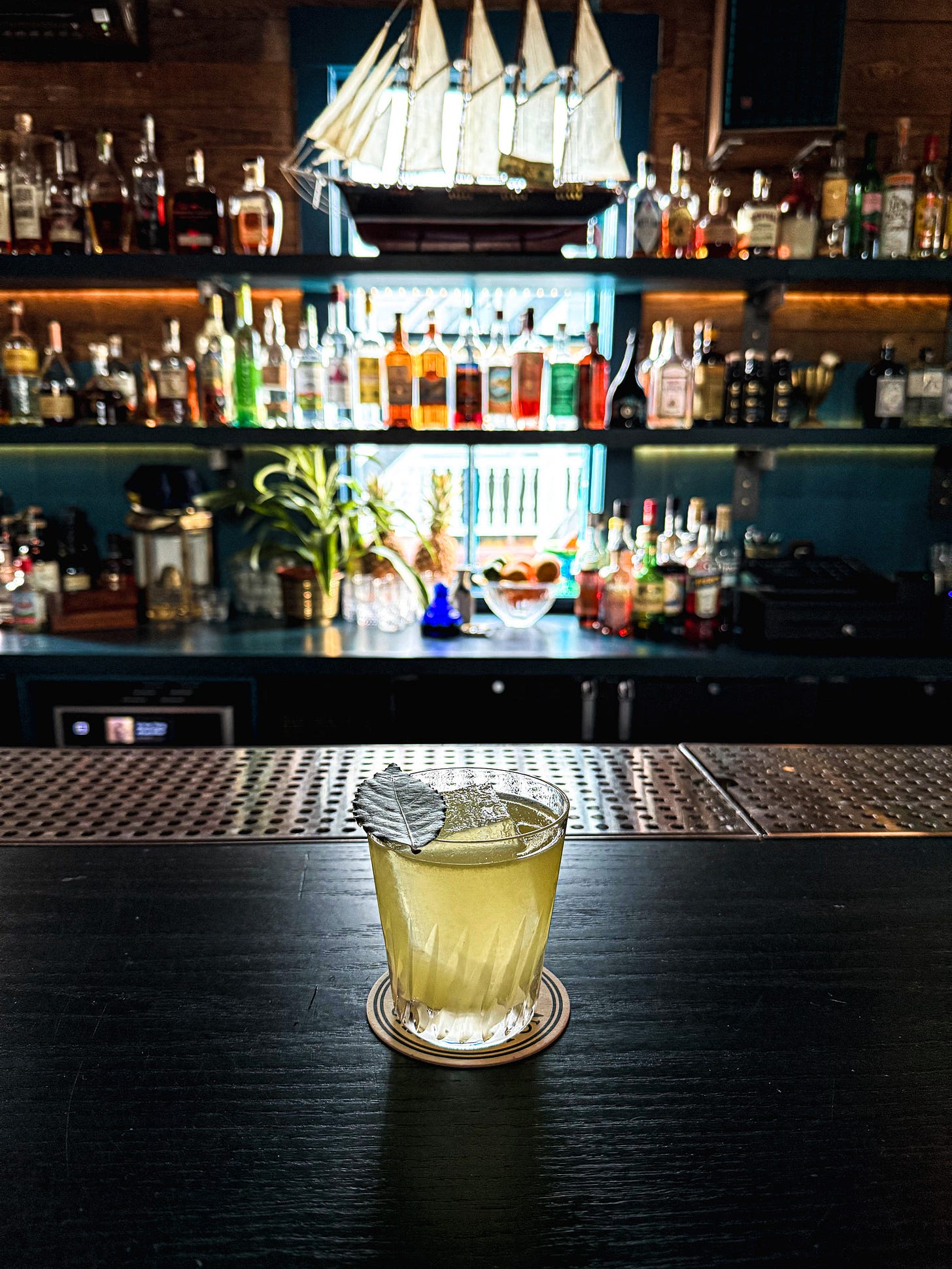
But just as getting drinks and snacks at Seahorse is no substitute for dining at Chubby Fish, the reverse is also true — this bar is a destination in its own right. “I think the nature of the long line outside Chubby Fish makes people curious about what they’re doing next,” Favier says. “The first few weeks we were fielding primarily people who were waiting in line about to go to dinner or coming from dinner or people who lived nearby. The goal from the beginning was never to be an extension of or a waiting room for Chubby Fish. We wanted to stand alone as a great place to get a drink.”
254 Coming St, Charleston, SC | @theseahorsechs
Download All Our Charleston Recommendations
Ready to plan your trip to Charleston? Our full list of favorites is available in our Field Guide to Charleston — free for paid subscribers! This 74-page dining guide includes a curated six-day itinerary with recommendations for breakfast, lunch, dinner, and drinks. It’s downloadable for offline reading, includes Google Maps and Instagram links, and is formatted for your phone — perfect for easy reference on your next trip.
Paid subscribers can download a free copy from our website by using the code found in this month’s Weekend Getaway newsletter. Plus: As a paid subscriber, you can use the code to get any other Field Guide you’d like, free of charge!
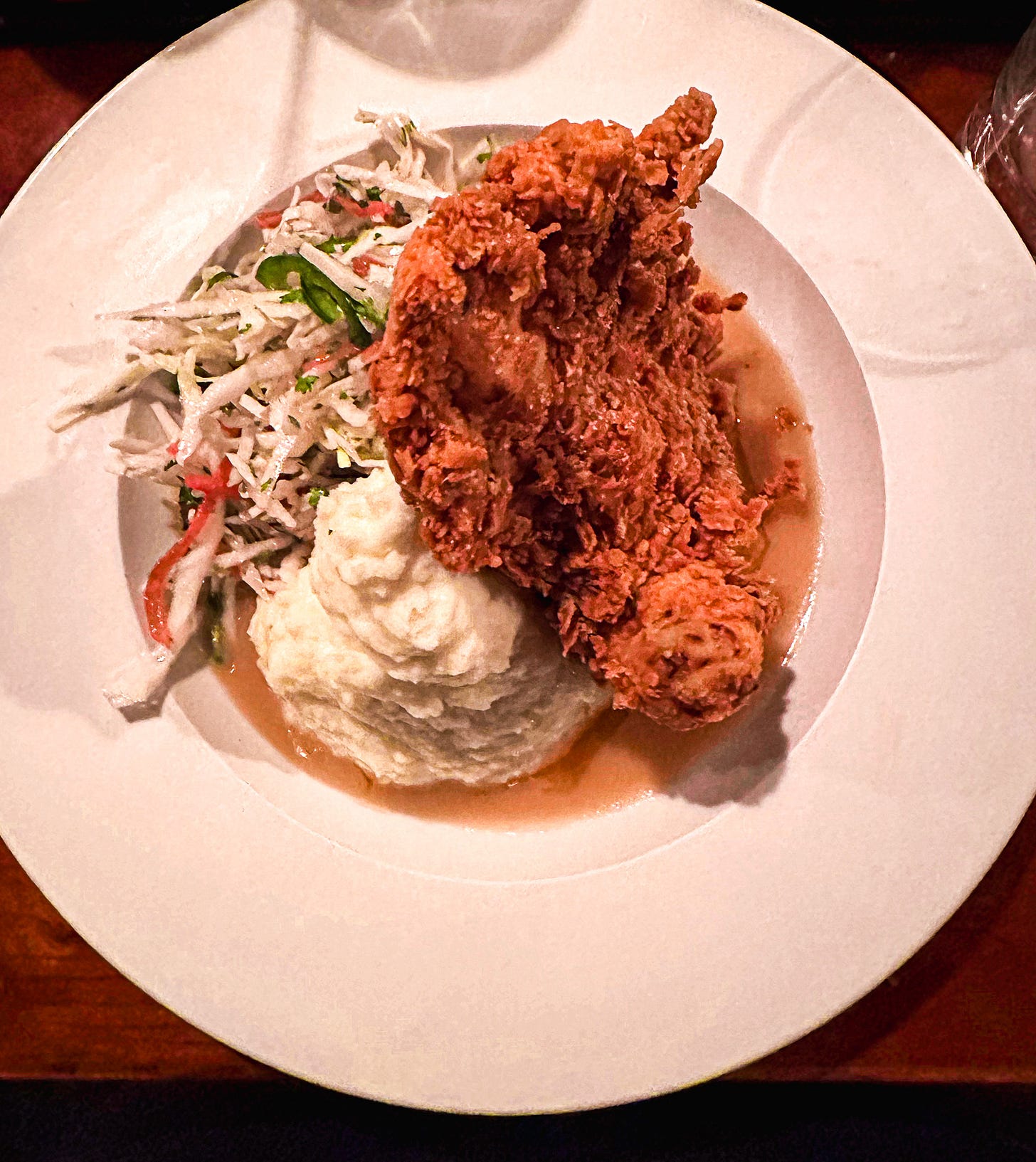
Fried Chicken from Calico
EASTHAMPTON, MASS. — Whenever we’re back East, Calico is in our plans for dinner — the restaurant has two cozy floors (we like the little basement bar), the cocktails are great, and the food menu features ever-changing plates (we are literally still talking about the gigante beans with Calabrian butter and confit garlic we ate there two-and-a-half years ago).
If there’s one dish to try here, make it the fried chicken, which never comes off the menu. It’s a dish that even predates Calico, as it was on the menu at the restaurant’s predecessor, Coco & the Cellar Bar. After Coco closed in 2021, some former employees and local restaurateurs opened the new spot. And thankfully the chicken came, too.
You get a beautifully fried buttermilk chicken breast served with garlic mashed potatoes and gravy. The key here is the jalapeño slaw, which adds both heat and cooling notes. You can also order each element separately, so you can build a big chicken feast or just order a piece of chicken to accompany your meal.
95 Main St, Easthampton, MA | @calicoeasthampton
Your Favorite Chef’s Favorite Restaurant Is Probably a Diner: The Palace Diner in Biddeford, Maine is a gem. The Lumberjack Breakfast is classic diner fare perfected, and the tuna sandwich is a work of art. So it’s no surprise to see chefs giving love to local diners. Food & Wine editor Amelia Schwartz writes that “after a post-pandemic craving for luxury, today people are wanting comfort and familiarity out of restaurant experiences, which diners deliver in spades.” While the menu at The Palace Diner could certainly be described as cheffy, my most-frequented diner is certainly not. Of course I’m talking about the Diner Grill on Irving Park in Chicago. (Sadly, a 2016 fire destroyed its most charming feature — the misspelled “Dinner Grill” sign that used to adorn the east side of the building.)
CALIFORNIA
Wine Trip Along the San Andreas Fault Line: “We tend to think of wine travel as heading to a region — the Napa Valley, Tuscany, Bordeaux — and staying put there,” writes Ray Isle, also in Food & Wine. “But I’d started to wonder if it might be even more interesting to follow a different kind of itinerary. Why not dive into history and geology and build a trip visiting wineries along the San Andreas?” There’s not much better than a California road trip. I’m in.
MICHIGAN
Water View Spots for Summer Eats & Drinks: Fellow Weekenders, we’re here to make sure you eat well when you travel. But we can all admit that sometimes we’re not up for the hottest new spot or a classic hole-in-the-wall. Sometimes we just want a decent burger with an excellent view. The folks over at
have put together a quick-hit list of just those sorts of places. You’re sure to find us at Pennyroyal on our next trip to Saugatuck… but a little lake perch with a harbor view at The Butler doesn’t sound so bad either.— Compiled by Kenney Marlatt
Want more? Chat with us on Substack, download our Field Guides, check out our archives, or follow us on Instagram @americanweekender. We’ll be back next week.


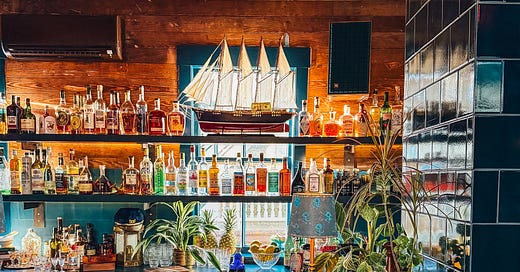





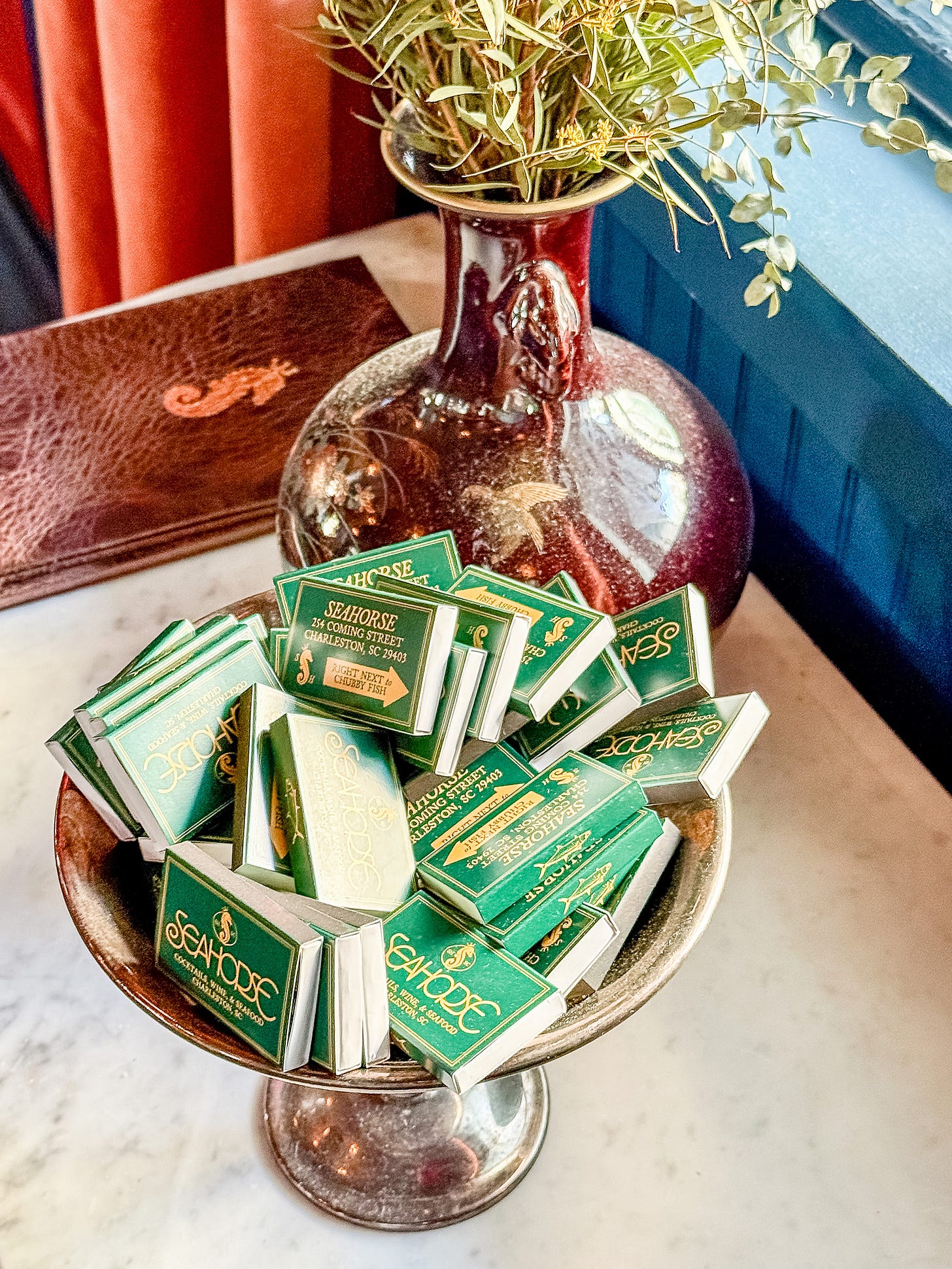







What a gorgeous place! I wish I could walk into these pictures and have a drink! (I’d wait till 5 o’clock, of course ;)